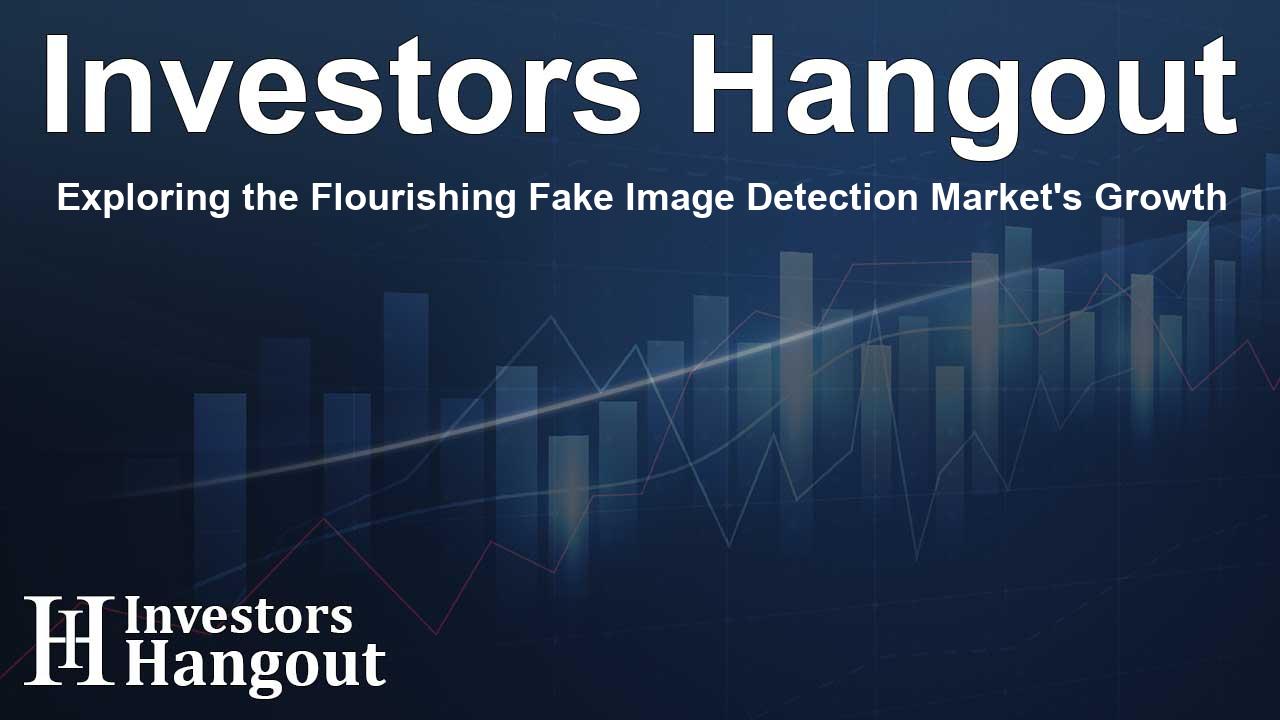Exploring the Flourishing Fake Image Detection Market's Growth

Introduction to the Expanding Fake Image Detection Market
As we navigate through an increasingly digital landscape, the fake image detection market is gaining significant momentum. It was valued at approximately US$ 928.45 million in 2024, and projections indicate a remarkable growth trajectory, reaching an anticipated US$ 12,901.11 million by the year 2033. This explosive evolution suggests a compound annual growth rate (CAGR) of 38.95% during the forecast period from 2025 to 2033.
The Impact of AI in Image Generation
The advancement of image generators has truly astounded industries. For instance, Adobe reported that within the first four months of its Firefly feature, users created an astonishing 3 billion images. Similarly, by early 2024, Midjourney recorded approximately 18 million images rendered each day. This rapid increase in digital content generation has outpaced most platforms' ability to moderate effectively, heightening demand for robust fake image detection solutions.
Real-World Implications of Fake Images
Real-world incidents underline the critical need for enhanced detection mechanisms. For example, a GAN-produced image, which depicted a fraudulent explosion, temporarily erased around US$ 71 billion from a major stock index before human moderators could intervene. In another instance, an AI-generated arrest photo circulated among six major news outlets within an hour. Such events emphasize the urgency behind investing in detection technologies.
Changing Attitudes Towards Fake Image Detection
Given these high-stakes scenarios, organizations are re-evaluating their strategies. Detection is now regarded as essential infrastructure rather than merely an experimental initiative. Security leads from prominent platforms conveyed to legislative committees that uploads flagged for manipulation increased dramatically, from 30 million to 140 million in a mere year. As such, budgets are dedicated to comprehensive solutions, including on-device watermarking and cloud-based forensic APIs.
Adapting to Regulatory Frameworks
Regulatory pressures are also reshaping how organizations approach procurement. Legislative measures, such as the EU AI Act, mandate providers to embed robust provenance signals when distributing synthetic images. Similarly, proposed laws in the US will require disclosure for AI-generated political imagery in upcoming election cycles. These regulations act as catalysts in the fake image detection market, pushing businesses to enhance their compliance mechanisms.
Technological Innovations Driving Progress
The fake image detection domain is not just growing; it's rapidly evolving with advancements in technology. Companies are now leveraging multimodal transformers and contrastive learning to enhance detection capabilities. For instance, Google’s SynthID has incorporated imperceptible watermarks that withstand alterations, while Meta's initiatives are pushing detection capabilities to meet real-time demands across various platforms.
Real-Time Detection: The Future of Content Integrity
The ability to process images in real time has become crucial. Recent hardware upgrades, like NVIDIA’s dedicated tensor cores for efficient deepfake classification, cater to the demands of high-resolution content processing while maintaining user experience. Such developments suggest a move toward faster, more accurate detection solutions.
The Role of Strategic Partnerships
To maximize their reach, vendors are forging strategic partnerships that bridge various domains, including cybersecurity, media, and legal frameworks. For instance, Thomson Reuters’ collaboration with Reality Defender has integrated forensic capabilities directly into legal workflows, thus facilitating seamless authenticity assessments within case management.
Collaboration and Standards in the Fake Image Detection Ecosystem
Moreover, cross-industry alliances are refining standards for evidence and authenticity in digital media. Organizations like the BBC and Adobe are collaborating to establish accepted protocols for cryptographically signed images, laying a foundation for consistency in litigation processes.
User Education: Strengthening the Human Firewall
In addition to technological advancements, user education plays a pivotal role in combating misinformation. Recognizing this, global entities such as UNESCO have enhanced educational curriculums to include training on spotting deepfakes. Programs like MediaWise have also emerged, focusing on increasing public awareness and detection skills.
Community-Led Approaches to Combat Fake Media
Platforms are embedding educational resources to empower users in characterizing authentic content. For example, LinkedIn incorporated explainer cards which resulted in a 33% drop in reported fake profiles, showcasing the direct impact of informed users in maintaining content integrity.
Investor Interest in Fake Image Solutions
The rising demand for authenticity in digital media continues to attract significant interest from investors. Recent funding rounds highlight a clear appetite for innovative detection technologies. Venture capital has been targeting solutions that meet the emerging requirement of explainability and accountability in detection mechanisms.
Conclusion: The Road Ahead for Fake Image Detection
As we look towards the future, the fake image detection market is set to prioritize interoperability and privacy. Emerging technologies are paving the way for more comprehensive and unified authenticity frameworks that span across various content forms, including images, video, and audio. Vendors capable of embracing these shifts will play a vital role in shaping a trustworthy digital landscape that upholds the integrity of visual media.
Frequently Asked Questions
What is the projected market size for fake image detection by 2033?
The fake image detection market is projected to reach US$ 12,901.11 million by 2033.
How quickly is the fake image detection market growing?
It is expected to grow at a compound annual growth rate (CAGR) of 38.95% from 2025 to 2033.
What are the major advancements in fake image detection technologies?
Advancements include real-time processing technologies and integration with cloud-based solutions for enhanced detection capabilities.
Are regulatory changes impacting the fake image detection market?
Yes, new laws are mandating more robust image verification processes, influencing procurement decisions in organizations.
How significant is user education in combating fake images?
User education enhances detection capabilities and strengthens the overall authenticity framework, making it a critical element in the fight against misinformation.
About The Author
Contact Lucas Young privately here. Or send an email with ATTN: Lucas Young as the subject to contact@investorshangout.com.
About Investors Hangout
Investors Hangout is a leading online stock forum for financial discussion and learning, offering a wide range of free tools and resources. It draws in traders of all levels, who exchange market knowledge, investigate trading tactics, and keep an eye on industry developments in real time. Featuring financial articles, stock message boards, quotes, charts, company profiles, and live news updates. Through cooperative learning and a wealth of informational resources, it helps users from novices creating their first portfolios to experts honing their techniques. Join Investors Hangout today: https://investorshangout.com/
The content of this article is based on factual, publicly available information and does not represent legal, financial, or investment advice. Investors Hangout does not offer financial advice, and the author is not a licensed financial advisor. Consult a qualified advisor before making any financial or investment decisions based on this article. This article should not be considered advice to purchase, sell, or hold any securities or other investments. If any of the material provided here is inaccurate, please contact us for corrections.
